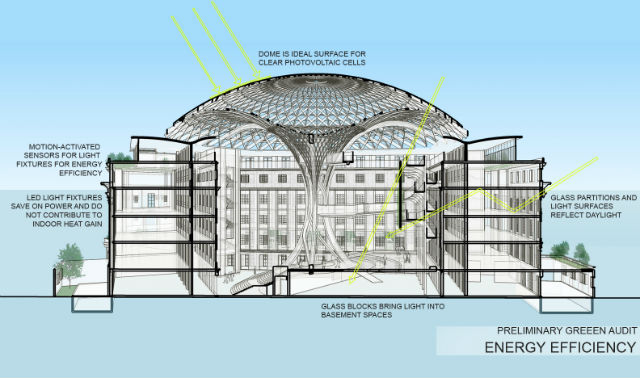For future Pinoy scientists, a Museum of Natural History
Michael Purugganan, when he was an elementary student at Union Science Elementary School in Malate, used to sneak into the National Science Development Board premises, where he would spend hours in a small museum.
"It just fascinated me. I just wanted to learn more about these things and what these people were doing there," Purruganan told GMA News Online.
"That was really what inspired me to become a scientist," said Purugganan, who is currently the Dean for Science at New York University and a world leader in evolutionary and ecological genomics.
With a new museum in the works, more young Filipinos may be inspired to become scientists. In a couple of years, the Philippines will have its own world class Museum of Natural History, showcasing endemic plants and animals that can be found in the country, according to a report on State of the Nation on January 23.
Museums bridge the past and present, but the government believes these can also meet the challenges of the future, GMA News reporter Bam Alegre said in the report. The building will feature environment-friendly technology, such as solar panels and rainwater harvesters, the report said.

For future generations
"One day, school children will be able to enter this museum, especially through the group entrance at the ground level, and come in and see and be awed," said architect Dominic Galicia, whose design concept was chosen for the museum.
The Museum of Natural History will be housed in the building to be vacated by the Department of Tourism. Beside it is the Museum of Filipino people, formerly the Department of Finance building, and the National Gallery of Art, formerly the Senate building. The proposed Museum of Natural History will complete the museum precinct of Manila.
"It's very good that they are maintaining the facade. At one point in history, itong buong area ng Luneta, Taft Avenue, were built according to Daniel Burnham's plan na classical ang look," said Bryan Paraiso, historian at the National Historical Commission of the Philippines.
The building's foundation is still sturdy, according to a study by the Department of Public Works and Highways and the National Museum, the report said. According to the report, no changes will be made to the building's exterior, which was designed before World War II by architect Antonio Toledo. Instead, the building will undergo retrofitting for its design, which follows an environmental theme.
The design concept comes from Galicia and interior designer Tina Periquet, who designed the Picasso Boutique Serviced Residences in Makati and The Mondrian Residences in Alabang. For these two projects, art was the inspiration for the husband-and-wife team. This time, they look to science in designing the Philippines' first Museum of Natural History.

At the center of the building, there will be a "Tree of Life" in the shape of a strand of DNA. Galicia and Periquet came up with the idea after observing scientists in a room full of leaf specimens. "We asked one of the scientists, 'What is the purpose of collecting all the leaf specimens? What is it you're after?' And he said, what we're after is DNA, "Galicia said on State of the Nation.
"But we didn't want it to look too organic, too messy. We didn't want it to look too solid. The tree actually embraces a glass elevator," Periquet added.
Biodiversity hotspot
For Purugganan, the idea of the Philippines having its own Museum of Natural History is exciting. "We are a biodiversity hotspot, so this would be a great opportunity," he said.
The Philippines ranks fifth in the world in terms of number of plant species and hosts about five percent of the world’s flora, a previous report said.
"The country is one of the few nations that is, in its entirety, both a hotspot and a megadiversity country, placing it among the top priority hotspots for global conservation," Conservation International said on its website.
One of Purugganan's dream projects is to have a "Philippine Expedition," which would mobilize our scientists to do a systematic survey of all the species in the country. "I don't think we have a good idea of everything we have in the country. . .I think the last time there was a systematic survey of the country was during the American occupation," Purugganan said, noting that in 2011, several new species were discovered during the Philippine Biodiversity Expedition of the University of the Philippines (UP) and the California Academy of Sciences (CAS).
Scientists said they may have discovered 75 new species of marine and terrestrial creatures endemic to the Philippines during the expedition, which explored varied ecosystems in Luzon, including Taal Lake.
"In a small part of the country they discovered so many new things. Imagine what you could find if you did it systematically from Batanes all the way to Tawi Tawi," said Purugganan. According to Purugganan, this would not be too expensive, but it would take some time.
He said it is important for the Museum of Natural History to do something different from the old museum styles. "It will be very important how they present it," he said.
The museum will be completed by 2015, the report said. – KDM, GMA News




